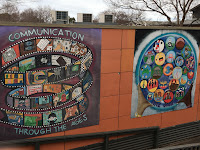The trip has come to an end, but the journey continues.
I have made lasting professional connections and friends.
And now the work begins!
I have another week before school starts for reflection, follow-up, global collaboration project plans, and continued connections. I have learned so much and am continuing to learn as I delve into all my resources and stay connected through professional social networks. This was an amazing opportunity to learn and grow as a teacher. As I had looked forward to the trip, I look forward to the continuation of the journey...the learning doesn't stop. Thank you Dalio Foundtion. Thank you FFT.
My take aways:
- I was impressed by the funding from the government to create resources, and finance the support staff and programs to implement coding into the curriculum.
- I was also excited by the depth and breadth of those resources (and the fact that I have access to them!)
- Public transportation in the cities is clean, convenient, state of the art, straightforward
- The same educational initiatives are popular worldwide
- There are many similarities within the schools
- Integrating of coding into the curriculum involves hands-on activities and resources
- The outdoors is a significant part of life in Australia
- There is a concerted effort to embrace and respect Aboriginal culture
- "Everyone" questioned the political climate of the US - as it is reported daily on the news
Thank you for following my adventures! I am excited to share my experiences and inspire colleagues to plan their own learning journeys. I am excited to open the walls of our classroom to a global collaboration experience.
We are bound by the restrictions we impose upon ourselves. Continue to learn and grow: expand your horizons, explore your world, exceed your comfort zone, and excite your mind!
























